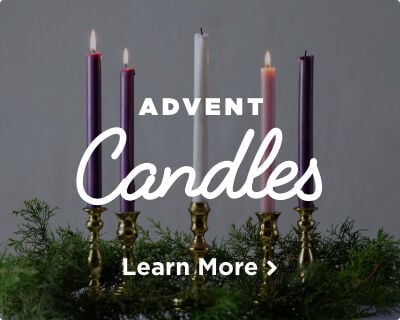Catholic Christmas Traditions
LEARN MORE
What’s your favorite celebration of the year?
What are your favorite Christmas traditions?
As we journey toward Christmas this season of Advent is a wonderful time to establish or reestablish some routines, rituals, and traditions. Make them healthy, bold, and playful.
Now, not every routine, ritual, and tradition can be all three. Christmas PJs can be fun and playful. Midnight Mass can be bold and profound. Taking a walk each day and praying for your family and friends as you walk can be bold, healthy, and playful.
Keep in mind that anything spiritual in the current cultural environment is bold. And boldness is good for the human spirit. Boldness stirs our souls and lets us know that our soul still has the vitality necessary to stand up for what is good, right, just, and noble.
This Christmas will change your life forever if you establish a new routine. What is the one thing you could do each day that would change everything for you? Why aren’t you doing it? Ask God for the grace this Christmas to establish that as a routine in your life.
Keep reading to discover classic Christmas traditions from around the world. Each of these traditions has a unique story and a unique way of reflecting the real meaning of Christmas.
Christmas Solemnities
December 26: Feast of St. Stephen
How to Celebrate the Feast of St. Stephen: Stephen was stoned to death and became the first Christian martyr. You can go to Mass, read the Book of Acts Chapter 6-7, or make a delicious meal to celebrate.
December 27: Feast of St. John the Evangelist
How to Celebrate the Feast of St. John the Evangelist: Did you know that John was the only apostle who wasn’t killed for the faith? Instead, he’s what we call a “white martyr,” which is someone who becomes a martyr without shedding any blood. Instead, he died to himself and the world and offered his entire life to God! There are many ways to celebrate this amazing saint’s feast day, including Mass, reading from the Book of John, and sharing a meal with the people you love! Traditionally, some Catholics across the world will drink special blessed wine in John’s honor.
December 28: Feast of the Holy Innocents
How to Celebrate the Feast of the Holy Innocents: Shortly after Jesus was born, King Herod sent out an order that every boy under the age of two in Bethlehem would be killed. Two thousand years later, we still honor the lives of these young, innocent children. You could go to Mass, read Matthew 2, and say a special prayer for the children in your life.
Sunday following Christmas Day: Feast of the Holy Family
How to Celebrate the Feast of the Holy Family: The feast of the Holy Family is a special celebration of Mary, Joseph and Jesus. Since it is a Sunday, Catholics attend Mass, but you can also eat a meal with your family and say some prayers together to celebrate!
January 1: Solemnity of Mary, Mother of God
How to Celebrate the Solemnity of Mary, Mother of God: Since this feast is a Holy Day of Obligation, Catholics attend Mass. You can also pray a rosary to celebrate this feast day and start off the New Year strong!
January 6: Solemnity of the Epiphany
How to the Epiphany: The Epiphany is the last of the twelve days of Christmas. It’s the day we celebrate the arrival of the magi who worshiped Jesus. There are many ways to celebrate this final day of Christmas. Some give gifts. Some eat King’s Cake, which has a hidden figure of baby Jesus inside. And some bless their home by using blessed chalk to write 20 + C + M + B + 25 over the front door. 20 is the first two numbers of the year, the three letters stand for the three magi named in the Bible (Caspar, Melchior, and Balthasar), and 25 is for the last two numbers of the year (2025).
What is a Nativity Crèche?
Did you know that the first nativity set was created by Francis of Assisi in 1223?
Nowadays, you see nativity scenes on Christmas cards, in town centers, at the mall, outside churches, and in homes all across the world. Traditionally a nativity set, also known as a nativity crèche or manger scene, is a set of figures that create the Christmas scene: baby Jesus, Mary, Joseph, the angel, the shepherds, the three kings, and a variety of farm animals. Catholics traditionally hide the baby Jesus and only add him to the scene on Christmas Day. This is a great visual way to help young children understand what we prepare for during Advent.
Where Did the Christmas Tree Come From?
For thousands of years, the evergreen tree has been a sign of hope and life. For ancient people, it was a reminder in the winter that sunlight and good weather would come again. For Christians, it's a reminder that Jesus came to bring us the hope of eternal life.
According to tradition, St. Boniface, an eighth century Catholic missionary in Germany, made the first Christmas tree. One Christmas Eve, he chopped down a large oak tree that the Germans used for pagan worship. He pointed to a nearby evergreen tree, saying that it represented peace and eternal life. He told the crowd of Germans to gather around evergreen trees in their homes in a spirit of kindness and love to commemorate the child Jesus.
In the early 1800s, German settlers brought the Christmas tree tradition to Pennsylvania. The rest of America adopted the tradition in 1846, and slowly but surely the Christmas tree gained popularity. Now, Christmas trees are seen in homes and on display all over the world. Their beauty and light remind us of the hope we have in Jesus.
Sign Up for Best Advent Ever
Join us and receive an inspirational video each day of Advent!
Why Do We Decorate with Lights?
Jesus is the light of the world...and Christmas is the perfect time to celebrate this fact with beautiful lights!
From Christmas trees to window candles, these Christmas decorations symbolize the light of Jesus shining through the darkness of sin and death.
Today’s strings of electric Christmas lights evolved from candles. During the 1500s, Christians used candles to decorate their Christmas trees. The flickering glow of the small flames amid the evergreen branches created a beautiful image of hope, but it was definitely a fire hazard. In 1882, Thomas Edison’s friend Edward H. Johnson created the first string of electric Christmas lights, making it much safer for people to light their trees.
Why Do We Exchange Gifts?
What’s your favorite part of Christmas? For many people—Catholic or not—the answer is gifts! Although gifts might seem like a worldy way to celebrate Christmas, there are truly Catholic roots to this fun tradition.
When Jesus was born, there were wise men, or magi, who came from distant lands to worship him. They offered him gifts of gold, frankincense, and myrrh. One reason we give gifts at Christmas time is to follow the example of the magi. We also follow in the example of the generous St. Nicholas.
Giving gifts is also a way to remember how, on that first Christmas night in a stable in Bethlehem, God gave us the greatest gift of all—his only son, who would die for our sins about three decades later. When we give gifts at Christmas, it is a wonderful opportunity to give of ourselves, imitating God’s amazing generosity and showing his love to others.
Midnight Mass
Have you ever been to Mass at midnight? While most of the world is asleep, eagerly waiting for Christmas morning, many Catholics venture out into the cold and attend a special Mass at midnight on Christmas Eve! Midnight Mass is a powerful opportunity to celebrate the birth of Jesus and a fun tradition many families follow every single year.
Looking for more inspiration this Advent season? Join us for Best Advent Ever!







